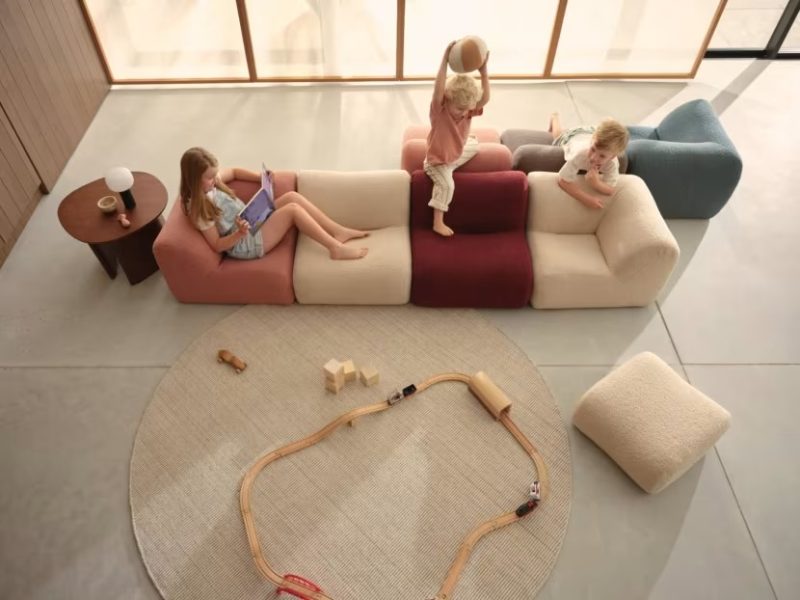Luxury furniture represents the pinnacle of craftsmanship and design, a celebration of aesthetic form and functionality melded seamlessly with exclusive materials. This in-depth exploration will uncover the meticulous processes involved in creating luxury furniture, showcasing the dedication and artistry that transform simple materials into extraordinary pieces of functional art.
The Philosophical Foundation of Luxury Furniture Design
Luxury furniture is more than an item of utility; it is a central piece in the narrative of a space, enhancing the environment and reflecting personal style and sophistication. The philosophy behind luxury furniture design revolves around creating pieces that offer enduring beauty and timeless appeal, transcending trends and immediate gratifications.
Conceptualization: Where Ideas Form
The journey of creating a luxury furniture piece begins with a concept. This initial stage involves extensive research and creative brainstorming, where designers draw inspiration from history, art, nature, and modern trends. Designers might sketch their ideas on paper or use advanced software to create digital prototypes. This stage is crucial for setting the tone and direction of the project.
Material Selection: The Soul of Furniture
The choice of materials in luxury furniture is a testament to its exclusivity and quality. Designers meticulously select materials not only for their aesthetic appeal but also for their durability and sustainability. Woods such as mahogany, walnut, and teak are prized for their rich colors and robustness; metals like brass and stainless steel for their strength and luster; and fabrics like silk, velvet, and top-grain leather for their comfort and elegance.
Craftsmanship: The Heart of the Process
At the core of luxury furniture making is exceptional craftsmanship. Skilled artisans, often with decades of experience, employ both traditional hand tools and modern machinery to shape, carve, and assemble each piece. Techniques such as dovetail joints in drawers or hand-carved details in wooden frames are not only structurally superior but also visually striking.
The Role of Technology in Modern Furniture Making
While traditional skills are invaluable, modern technology also plays a significant role. Computer-aided design (CAD) and computer numerical control (CNC) machines ensure precision that hand tools might not achieve. These technologies allow for the creation of complex, intricate designs that would be exceedingly difficult, if not impossible, to replicate by hand.
Finishing Touches: Where Art Meets the Eye
Finishing is an art form in itself. This stage involves staining, sealing, and polishing the furniture to perfection. The finish not only enhances the look of the piece but also protects the materials from wear and tear. Techniques like French polishing or gilding add depth and character to the surface, making each piece unique.
Quality Assurance: Upholding Standards
Quality control is stringent in the luxury furniture industry. Each piece undergoes thorough inspections at various stages of production. The goal is to ensure that the final product meets or exceeds both the designer’s expectations and the client’s needs. Any imperfections, no matter how small, are corrected before the piece leaves the workshop.
Sustainable Practices: The Future of Luxury Furniture
Sustainability is becoming increasingly important in luxury furniture production. More brands are adopting eco-friendly practices, from sourcing sustainably harvested wood to using non-toxic finishes. These steps not only appeal to environmentally conscious consumers but also contribute to the longevity of the pieces, an essential aspect of luxury items.
The Business of Luxury Furniture: From Workshop to Showroom
Once completed, luxury furniture pieces often find their way into showrooms around the world or directly into the homes of bespoke clients. The marketing and sale of these pieces require as much finesse and sophistication as their creation, often involving personalized customer service and aftercare.
Challenges and Innovations
The luxury furniture industry faces challenges such as fluctuating material costs and changing consumer trends. However, these challenges drive innovation, pushing designers and artisans to explore new materials, adapt to new technologies, and continually improve their craft.
Conclusion
The creation of luxury furniture is a comprehensive process that blends art, craftsmanship, and technology. Each piece tells a story of cultural heritage, meticulous craftsmanship, and an unyielding quest for quality. Behind every luxurious furniture item is a team of dedicated designers and craftsmen who see beyond the material to its deepest potentials. As the industry evolves, the commitment to excellence remains the constant that defines the true value of luxury furniture in any era.







